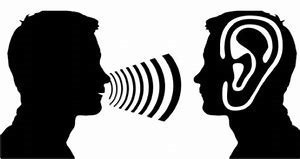We are defined as much by our relationships as by our personalities. Our most significant relationships begin within the family. It makes sense, therefore, to discover what roles we play within our family systems. A family is called a system because the different members work together towards the same goal, much like the parts in a car operate separately but come together as a unit to make the car run.
According to Rick Peterson, Professor of Human Development at Virginia Tech (www.ext.vt.edu), individuals within a family have both instrumental and affective roles to play.
Instrumental roles are concerned with the provision of physical resources, decision making, and family management. Affective roles exist to provide emotional support and encouragement to family members. Furthermore, Peterson says, there are five essential roles for effective family functioning:
1. Provision of Resources - such as food, clothing, and shelter for all family members (instrumental)
2. Nurturance and Support - such as comfort, warmth, and reassurance for family members (Affective)
3. Life Skills Development - includes physical, emotional, social, and spiritual development of children and adults (Instrumental)
4. Maintenance and Management of the family system - includes leadership, decision making, handling family finances, maintaining discipline,
enforcing behavioral standards, maintaining interaction with extended family (Instrumental)
5. Sexual gratification of marital partners - involves meeting sexual needs in a manner that is satisfying to both spouses (Affective)
Both parents and other adults in the family, as well as children, have roles to play. These roles evolve and change as the family grows, but the strength and stability of the family system depend on how effectively each member of the family can play their specific role. For example, mom may provide emotional support and comfort, while dad is the bread winner. Children, in their own unique ways, help provide warmth and reassurance to both parents. The modern family, however, may now be configured in many different ways including stepparents, adoptive parents, gay parents, extended family, foster children, etc. Whatever the configuration of the family, the system can work if the members fulfill their roles effectively.
To help you determine your role within the family, try using our Family Role Kit. (see below) Here's how it works: Designate a YOU piece. Place the pieces on the magnet board and move them around according to your personal perceptions of the closeness between family members. Then use the different arrow connectors to represent the roles each one plays. The result will be a picture of your family system, and a clearer idea of your role in it.
Family Role Kit – Members
(Our online store is open)
As in the example above, after you’ve created your family role magnet, you could write a description of your family system and the roles that different members play within the family: Mom & Dad are supportive of each other, Dad is the breadwinner and Mom stays at home. She plays the main role of nurturing Dad, daughter (YOU), and baby. You have a more or less independent life, are spoiled by your grandma, and you in turn spoil the baby. Dad provides for everyone including his daughter (your stepsister) who seems to be isolated from the rest of the family. Defining family roles helps you to understand how your family system works, and if there are any connection or communication issues that need to be resolved.
TTaking our cue from the term "family system" (above), let's examine the connections that exist between family members. We connect to people in four ways: physically, mentally, emotionally, and spiritually. This set of connections constitutes a relationship. To help you visualize the structure of a relationship, think of it as a triangle.
This is paragraph text. Double click here to edit and add your own text.
1. Stay calm - Anger will get in the way of clear thinking, so if you need time to calm down, postpone the discussion.our own text.
Anger is an emotion that cannot be denied. However, it can be redirected. If you show anger at the outset of a conflict by screaming, cursing, or becoming physically or verbally violent, communication stops right there. Do you want this to happen?
2. Identify the problem - Describe the problem in a non-blameful way. Make sure both parties understand what the problem is.
Do not skip this step. Misunderstanding the nature of the problem often leads to the wrong solution. Even discussion on a mundane issue, like choosing a restaurant for dinner, can escalate to unmanageable heights if the problem isn't identified. Make a statement on what the possible problems are. For example: (1) Ruth, your sister, is trying to run the situation again in her usual bossy way by choosing a restaurant. (2) That restaurant is too expensive for you. (3) Ruth only thinks of herself. (4) Ruth always gets her way, this time you want to get your way. (5) all of the above (6) none of the above. What do you do? Identify the problem in a non-blameful way: Ruth wants to go to Restaurant A and I want to go to Restaurant B. We are both feeling frustrated about the disagreement.
This is paragraph text. Double click here to edit and add your own text.
T3. Determine who "owns" the problem - You need to recognize when the problem truly concerns you or when it belongs to the other person.

There are three possible options here: the problem can belong to you, it can belong to Ruth, or you may both share the problem. Analyze the problem statement and divide it into its component parts: (1) Ruth wants to go to Restaurant A. (2) You want to go to Restaurant B. (3) You are both frustrated. The statement of the problem in #3 above, indicates that you share the problem with Ruth.
T4. If you own the problem - Use assertive I-messages (feeling statements that start with the For example, don't say: "Ruth,
you always want to get your way."
Or "You're so bossy!" Instead, you might say: "I'mfeeling
frustrated that we can't come to an agreement here." Or
"I'm tired of arguing about this." I-messages reveal your
feelings to the other person without accusing her.
5. If the other person owns the problem - Use door-openers (words and phrases that encourage the other person to talk), and active listening—which means listening to the message behind the words-- to give her feedback about what she is telling you.
wn text.

For example, if Ruth says:
"I want to go to Restaurant A for dinner."
Then you can say "Tell me more about that restaurant." That's a door-opener.
Or you might say " Restaurant A serves Mediterranean food, tell me what's good about that?" That's another door-opener. Or, to practice active listening, you can say " Ruth, you want to go to Restaurant A because you love Mediterranean food. Or " Ruth, you're feeling frustrated because you want to go to Restaurant A and I want to go to Restaurant B."
6. If you both share the problem - Use the No-Lose method (also called the win-win method) to solve the problem.
If you say: "Oh ok, let's go to Restaurant A," Ruth wins. If she says "Oh alright, you win, let's go to Restaurant B," Ruth loses. Either way, ill feelings are generated, and chances are, the evening will be a failure with one person thinking she's a loser. Go back to #3 above and the problem statement: Ruth wants to go to Restaurant A. You want to go to Restaurant B. You are both feeling frustrated about the disagreement. Here’s how the conversation should go:
Ruth: I want to go to Restaurant A.
You: Tell me more about Restaurant A (door opener)
Ruth: It's Mediterranean, I love Mediterranean.
You: Sounds like you're really craving for Mediterranean food. (active listening)ng)
This is paragraph text. Double click here to edit and add your own text.
Ruth: Yes, the last time was a year ago, remember, when we were in New York.
You: I know you loved that, but remember, I was allergic to the shrimp, and broke out in hives. (I-message)
Rtext.
Using this method (although admittedly longer in dialogue or discussion) is a compromise solution. No one wins because no one loses.
The Science of Good Relationships